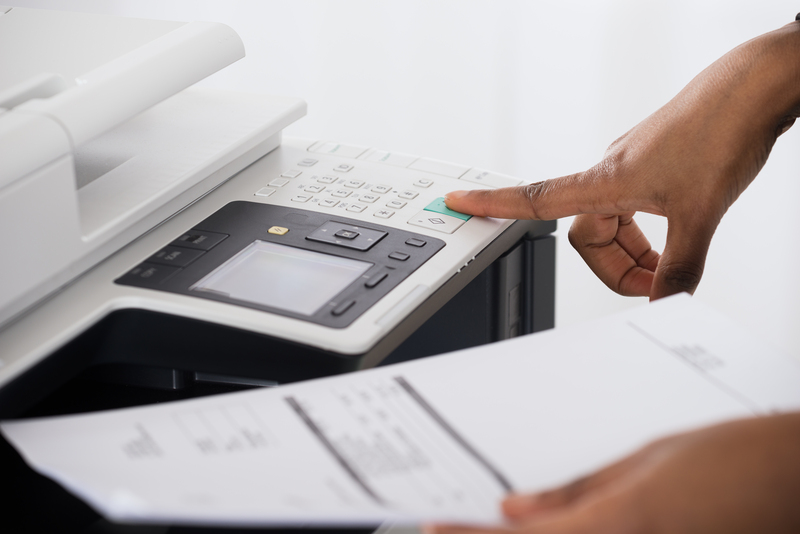Harnessing Technology to End Microplastic Pollution: Innovative Solutions for a Cleaner Future
Microplastic pollution is a growing environmental crisis that threatens our oceans, waterways, food systems, and human health. As researchers and innovators race against time to mitigate this threat, a new hope emerges: cutting-edge technology. Modern solutions are opening pathways not just to contain, but to eliminate microplastics from our planet. This comprehensive article explores how harnessing technology can end microplastic pollution, investigating practical applications, emerging breakthroughs, and the promise of a cleaner, safer future.
What are Microplastics?
Microplastics are tiny plastic particles--generally less than 5 millimeters in diameter--that originate from various sources. There are two main types:
- Primary microplastics: Produced intentionally for use in products such as cosmetic exfoliants, industrial abrasives, synthetic clothing fibers, and plastic pellets for manufacturing.
- Secondary microplastics: Resulting from the breakdown of larger plastic debris due to exposure to environmental factors like sunlight, wave action, and friction.
Thanks to their small size and pervasive use, microplastics infiltrate soils, rivers, the ocean, wildlife, and even our bloodstream. Their persistence in the environment demands scalable solutions.

The Scope of Microplastic Pollution
Microplastic contamination has reached alarming levels. Oceanographers estimate that trillions of microplastic particles now circulate in aquatic environments, with significant concentrations found even in remote parts of the Arctic and the deep sea. They are also present in bottled water, beer, table salt, and the air we breathe.
- Biological Threat: Marine organisms ingest microplastics, disrupting food webs and bioaccumulating toxins in animal tissues.
- Human Health Concern: Potential for tiny plastic particles to enter the human body, possibly causing inflammatory responses and transporting dangerous chemicals.
- Economic Costs: Damage to fisheries, tourism, and water treatment infrastructure.
Addressing microplastic pollution is both an environmental necessity and a societal imperative. How can modern technology help us turn the tide?
Innovative Technologies Combatting Microplastics Pollution
Modern innovations are at the forefront of ending microplastic pollution. Below are several technological strategies and solutions reshaping our approach to microplastic mitigation.
1. Advanced Filtration and Separation Techniques
Water purification and filtration technologies are among the most effective tools for intercepting microplastics before they enter aquatic habitats.
- Nano-filtration membranes: Sophisticated filters, composed of ultra-fine mesh or nanomaterials, can trap microscopic plastic particles as water passes through treatment plants.
- Electrocoagulation: This process uses electricity to clump microplastic particles and sediments together, making them easier to filter from water sources.
- Biofilters: Engineered wetlands or biological reactors use living organisms, such as fungi or bacteria, to capture and sometimes break down microplastics.
Modern wastewater plants are increasingly integrating these methods, while portable filtration devices for personal and local use are making their way into the market. With successful adoption, these technologies can stop microplastics at their source.
2. Ocean Cleanup Technologies
Large-scale ocean cleanup projects rely on technological engineering and automation to capture microplastics already in ocean gyres and along coastlines.
- The Ocean Cleanup Project: Uses floating barriers and specially designed interceptors to concentrate and remove plastic debris down to a few millimeters in size.
- Microplastic-trapping vessels: Ships equipped with water filtration systems collect tiny particles as they traverse polluted waters.
- Autonomous robots and drones: Underwater drones, such as "plastic-eating" robots, are being trialed to target microplastic pollution hotspots in rivers, lakes, and coastal waters.
*The integration of smart sensors and real-time data analysis enables more precise targeting and recovery of microplastics, maximizing efficiency and minimizing impact on wildlife.*
3. Biodegradable and Alternative Plastics
One of the most promising ways to reduce microplastic creation is through material innovation. Enterprises and researchers are developing biodegradable plastics that break down into harmless natural materials, unlike traditional plastics that fragment into microplastics.
- PLA and PHA Plastics: Derived from renewable sources like cornstarch, sugarcane, or bacteria, these materials decompose rapidly in composting environments.
- Edible packaging and films: Emerging replacements, made from seaweed, rice, or potato starch, eliminate the need for synthetic polymers entirely.
- Biodegradable textile fibers: Clothing manufacturers are incorporating fibers that naturally break down, limiting the microplastic fibers shed in laundry.
*Although challenges remain around cost and scalability, embracing alternative materials is crucial to curbing future microplastic pollution.*
4. Microplastic Detection and Monitoring
Efforts to end microplastic pollution depend on our ability to precisely measure and track contamination. Technological advances are revolutionizing detection methods.
- Laser-based sensors and spectroscopy: Instruments such as Fourier-transform infrared (FTIR) and Raman spectroscopy can identify and quantify microplastics, even in complex samples.
- AI-driven image recognition: Machine learning algorithms analyze microscopic images for rapid and accurate assessment of microplastic concentration and composition.
- Remote sensing networks: Satellite and drone-based platforms provide large-scale monitoring of plastic hotspots, supporting targeted cleanup operations.
*Harnessing technology for robust microplastic monitoring empowers policymakers and activists with better data, guiding effective interventions.*
5. Washing Machine and Textile Innovations
Household washing machines are a major source of textile microplastic fibers that end up in wastewater and, eventually, the environment. Innovative solutions include:
- Microfiber filters: Attachments for washing machines that capture synthetic fibers during laundry cycles.
- Fabrics designed to shed fewer fibers: Technological advances in material science are enabling the development of textiles with tighter weaves and coatings that reduce microfiber release.
- Detergent additives: New formulations can help prevent the fragmentation of fibers in the wash.
*Wide adoption of these technologies at the consumer and manufacturer level can dramatically limit the spread of microplastic fibers.*
Emerging Technologies with Future Impact
Beyond current efforts, the technological landscape continues to evolve, offering new hope in the battle to end microplastic contamination. The following emerging solutions hold particular promise:
Enzyme and Microbial Degradation
Scientists are engineering enzymes and selecting microbial strains capable of breaking down plastic polymers into harmless molecules.
- Enzyme-based bioremediation: Recent discoveries of plastic-eating enzymes such as PETase and MHETase inspire genetically modified bacteria that could target and digest microplastics in water and soil.
- Fungal degradation: Certain fungi produce enzymes that degrade tough polymers, potentially offering scalable cleanup options.
*If proven environmentally safe and effective, these biological tools could revolutionize microplastic elimination at a molecular level.*
Smart Materials and Self-Cleaning Surfaces
Nanotechnology and advanced materials science are inspiring:
- Smart filters: Surfaces that can identify and selectively trap only microplastics, excluding other debris.
- Self-cleaning infrastructure: Pipes and drains treated with special coatings that repel plastics, reducing accumulation and facilitating easier collection.
Blockchain for Transparency and Accountability
Ensuring the traceability of plastics throughout their life cycles, blockchain technology enables:
- Supply chain monitoring: Tracking raw materials and finished goods for pollution accountability.
- Pollution credits and incentives: Innovative platforms that reward companies actively reducing microplastic generation and recovery.
Integrating Policy, Innovation, and Education
While technology is reshaping the fight to end microplastic contamination, a holistic approach is essential for sustainable success. Integration of technological innovation with strategic policy and public education is critical.
- Regulations and Standards: Governments can incentivize the development and adoption of microplastic mitigation technology with stricter discharge requirements, product labeling laws, and bans on primary microplastics in cosmetics and industrial processes.
- Encouraging Corporate Responsibility: Companies across fashion, packaging, and industry should invest in research, embrace sustainable practices, and support closed-loop recycling initiatives.
- Public Awareness Campaigns: Empowering consumers to make environmentally friendly choices, such as purchasing biodegradable products and using microfiber-catching laundry solutions, fosters market demand for cleaner technology.
*Only through combined action--technological, legislative, and societal--can we hope to achieve a microplastic-free future.*
Case Studies: Technology in Action Against Microplastic Pollution
The Ocean Cleanup and River Interceptor
Launched by Dutch inventor Boyan Slat, The Ocean Cleanup has deployed a fleet of floating barriers and automated river interceptors targeting heavy plastic load before it ever reaches the sea. As of 2024, these devices have collected thousands of tons of plastic, including significant volumes of microplastic particles.
WWTP Upgrades in Europe and Asia
Municipalities across Germany, Japan, and Singapore have retrofitted wastewater treatment plants (WWTPs) with nano-filtration and electrocoagulation technology, reducing microplastic discharge by over 90%. These upgrades serve as scalable blueprints for cities worldwide.
Biodegradable Microbeads in Personal Care
Many cosmetic brands now use biodegradable alternatives to polyethylene microbeads in face scrubs and toothpaste. These natural substitutes dissolve harmlessly, substantially reducing primary microplastic release.

Challenges to Overcome
Despite significant progress, the journey to end microplastic pollution with technology faces obstacles:
- Cost and Accessibility: Cutting-edge technologies can be expensive and logistically challenging to implement in remote or low-resource settings.
- Complexity of Microplastic Mixtures: Microplastics come in many sizes, shapes, and chemical compositions, complicating detection, filtration, and recycling efforts.
- Environmental Risks: Some bio-remediation or nanotech solutions may have unintended ecological impacts that require thorough assessment before large-scale deployment.
- Consumer Habits: Overcoming resistance to new washing protocols, dietary changes, or alternative packaging still requires sustained education and incentives.
The Road Ahead: A Microplastic-Free Tomorrow
As technology rapidly evolves, so too does our capacity to combat microplastic pollution at unprecedented scales. From robust detection systems and biodegradable alternatives to enzyme-powered biodegradation and smart infrastructure, innovation is placing the dream of a microplastic-free future within our grasp.
Harnessing technology to end microplastic pollution will require sustained investment, multi-sectoral collaboration, and deep public engagement. Every new breakthrough brings us closer to restoring the balance of ecosystems, protecting public health, and preserving the integrity of our natural world.
With collective will and smart solutions, we can envision a day when microplastic pollution is no longer an inescapable reality--but a challenge humanity overcame through innovation, determination, and global stewardship.
- Invest in innovation: Support research and adoption of pioneering cleanup, filtering, and monitoring technologies.
- Choose smart materials: Embrace biodegradable and alternative plastics in daily life and business operations.
- Advocate for policy: Demand legislators set strong standards for microplastic discharge and product safety.
- Educate and inspire: Spread awareness of microplastic hazards and the promise of a cleaner, healthier planet through technology.
The journey to end microplastic pollution is underway. Through the power of technology and collective action, a cleaner tomorrow is within reach.